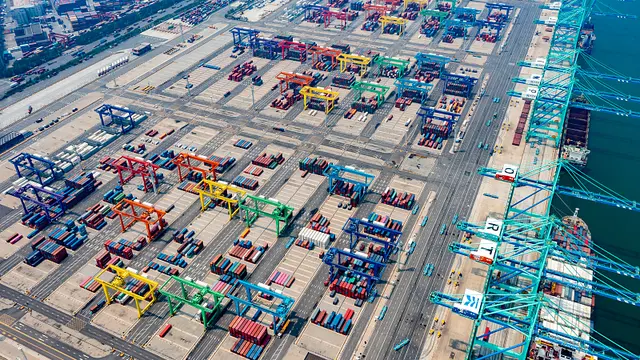Since the initiation of reform and opening-up, China has achieved remarkable achievements in various aspects of economic and social development. Regional development strategies and policies have played a pivotal role in this success. These major regional development strategies can be summarized as the "Four Three Two One" framework, which includes "Four Major Regions + Three Urban Clusters + Two Economic Belts + One Belt and One Road."
Building upon foundational strategies like Western Development, Northeast Revitalization, Central Region Rise, and Eastern Region Pioneering Development, China has further implemented a series of major strategies. These include the coordinated development of the Beijing-Tianjin-Hebei region, integration of the Yangtze River Delta, construction of the Guangdong-Hong Kong-Macao Greater Bay Area, development of the Yangtze River Economic Belt, ecological protection and high-quality development of the Yellow River Basin, and active participation in the Belt and Road Initiative, which connects China domestically and internationally.
These significant regional development strategy decisions form the overarching framework for regional development in China and hold immense strategic significance in guiding and promoting national economic development.
China's strategy for regional coordinated development has consistently been a key component of its economic policies. This strategy aims to promote synergistic growth among different regions, achieving balanced and sustainable economic development. Among these initiatives, the coordinated development of the Beijing-Tianjin-Hebei region serves as a prime example, demonstrating the Chinese government's commitment and efforts to advance regional harmony.
The background for the Beijing-Tianjin-Hebei coordinated development strategy is China's long-term urbanization and rapid economic growth, which have led to resource over-concentration and increased environmental pressures in some areas, while others lagged behind. To achieve more equitable development, the Chinese government introduced the vision of integrated development for Beijing, the capital, Tianjin Municipality and Hebei Province in 2014, consolidating these regions into a more competitive and sustainable mega-city cluster.
Under the guidance of the Beijing-Tianjin-Hebei coordinated development strategy, the region has achieved a series of remarkable accomplishments. To begin with, infrastructure development has received robust support, with improvements and expansions in high-speed railways, transportation hubs, and water projects, enhancing connectivity among different areas. This has facilitated the movement of people and goods, promoting the integration of economic activities.
The Beijing-Tianjin-Hebei region has attracted significant investments and businesses. The government has rolled out a series of preferential policies, including tax incentives, R&D funding support, and the establishment of innovation and entrepreneurship bases, to encourage businesses to establish or expand operations in the area. This has spurred the growth of high-tech industries and propelled economic upgrading. To promote industrial upgrading and innovation, the region is actively developing high-tech industries, including artificial intelligence, biotechnology, new energy, and information technology. Several high-tech parks and innovation centers have been established, attracting numerous innovative enterprises and investments.
Furthermore, environmental protection is a central element of the Beijing-Tianjin-Hebei coordinated development strategy. The region has long grappled with smog and environmental pollution, but the government has taken resolute measures to improve air quality and the ecological environment. The closure of highly polluting factories, improved energy efficiency, and the promotion of clean energy sources, are all part of these efforts. This has not only improved the quality of life for residents but has also contributed to sustainability.
In addition, the success of the strategy hinges on resolute leadership and cross-departmental cooperation from the government. Collaboration between central and local governments, as well as coordination among regional governments, has provided strong support for the implementation of the strategy. Information sharing and resource coordination among government departments have accelerated project advancement and problem-solving.
The coordinated development strategy encourages the cross-regional mobility of talent. Measures have been put in place to attract and retain high-level professionals, providing intellectual support for regional innovation and development. Additionally, interregional educational cooperation helps cultivate a higher number of high-quality professionals.
The three regions of Beijing, Tianjin and Hebei are collectively committed to promoting industry synergy. This includes the development of complementary advantages in industries, the promotion of supply chain coordination, and the formation of innovation alliances to achieve higher levels of economic synergy. The coordinated development also involves urban planning and construction. Collaborative planning among these cities is expected to improve the rationality of urban layouts and reduce the resource and environmental pressures associated with urban development.
The Beijing-Tianjin-Hebei coordinated development strategy exemplifies China's regional coordinated development strategy. By strengthening infrastructure, attracting investment, promoting industrial upgrading, and improving the environment, the region has become a vivid example of how regional synergy can drive economic growth and enhance the quality of life for residents. The success of this strategy's experience can provide valuable insights for other regions, aiding China in achieving more balanced and sustainable development.
(CGTN)
 简体中文
简体中文

